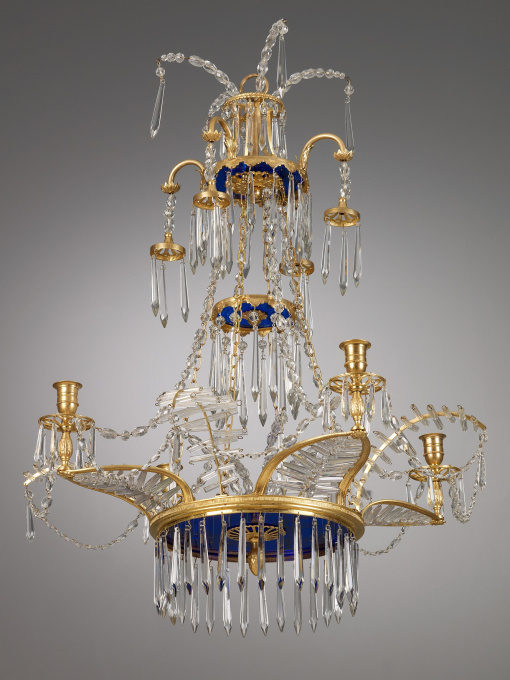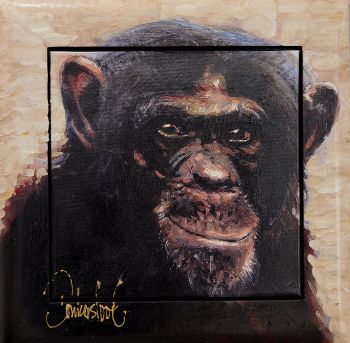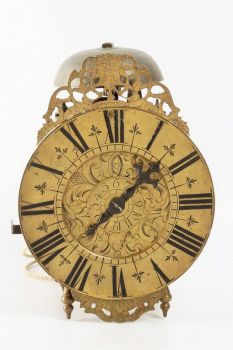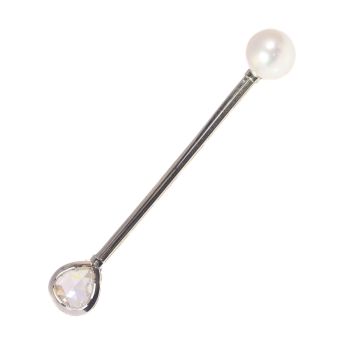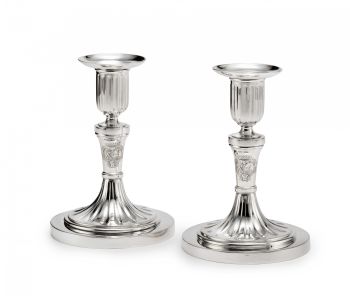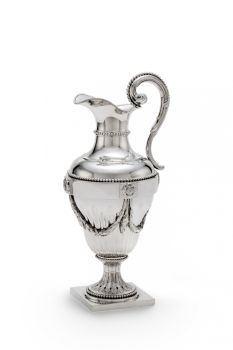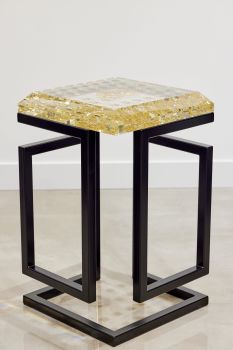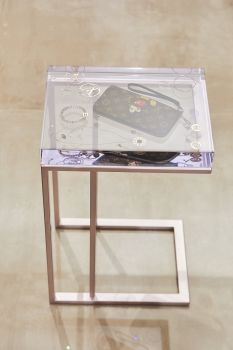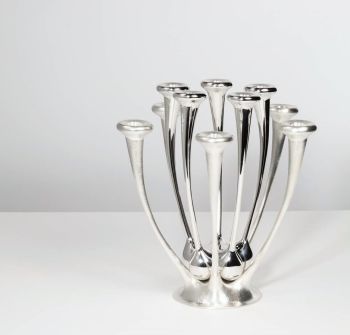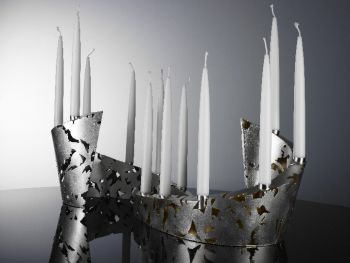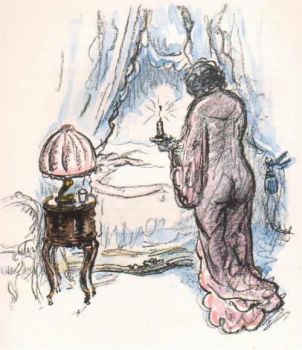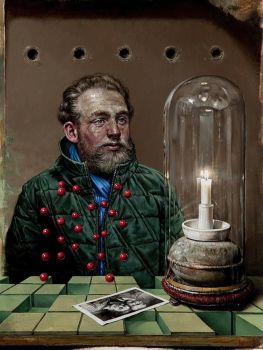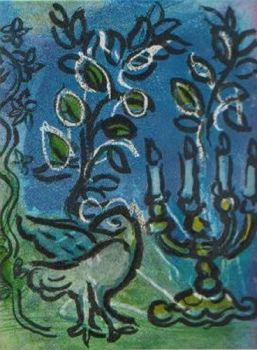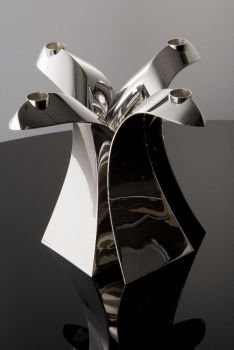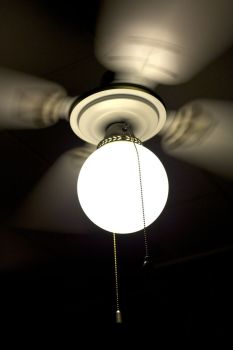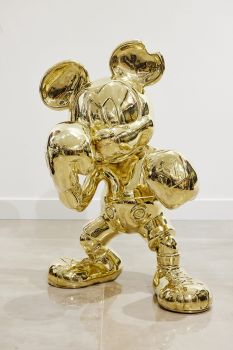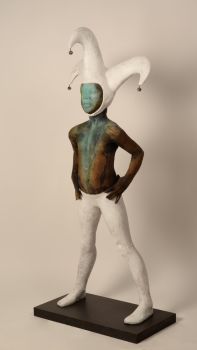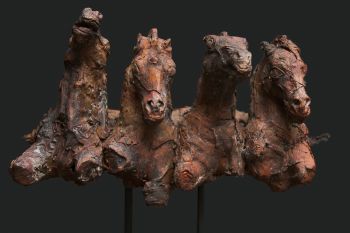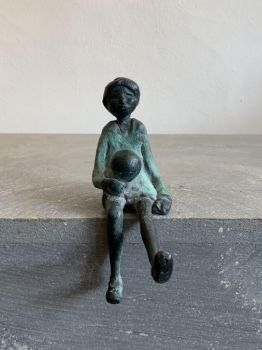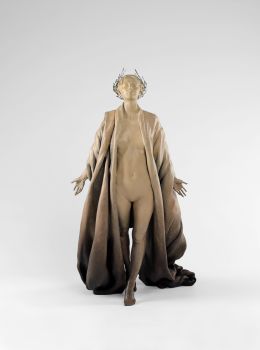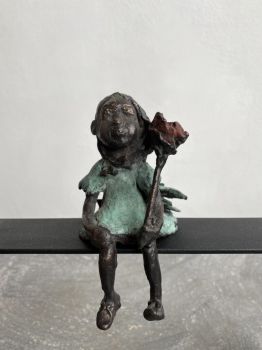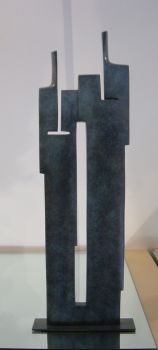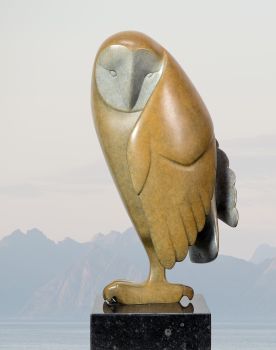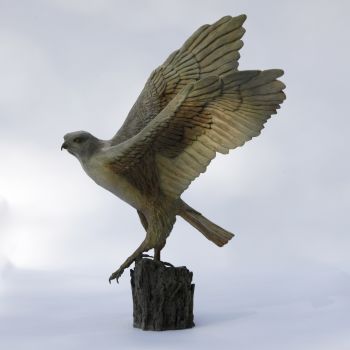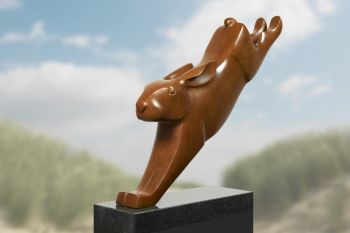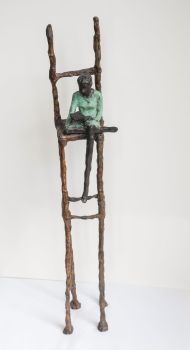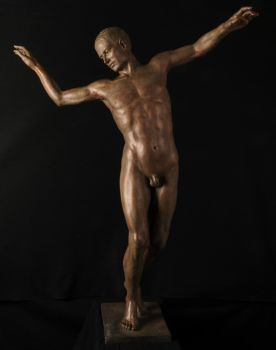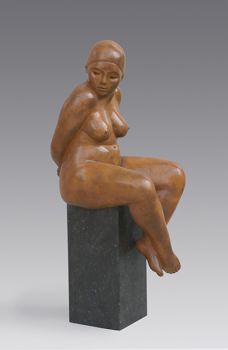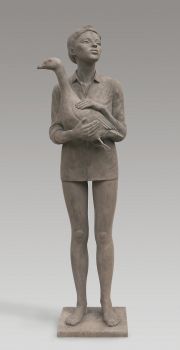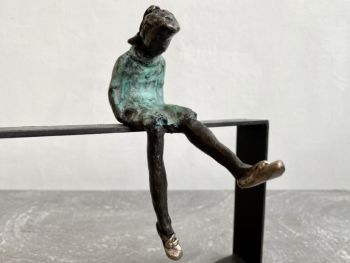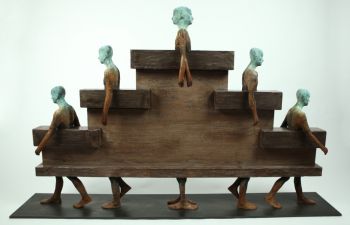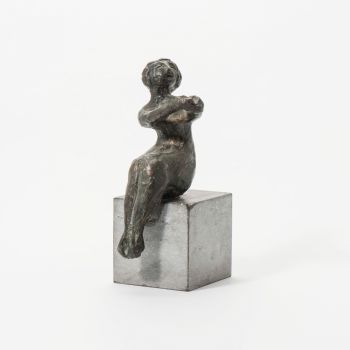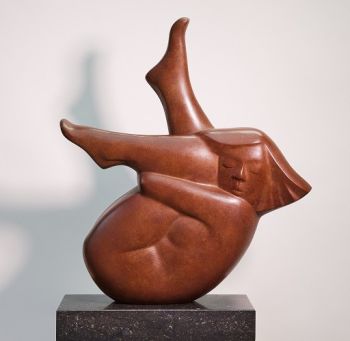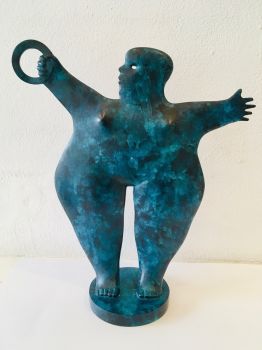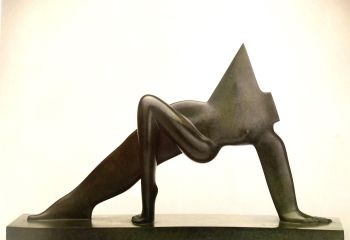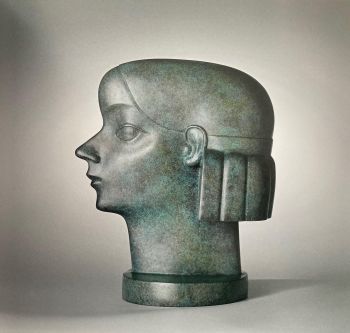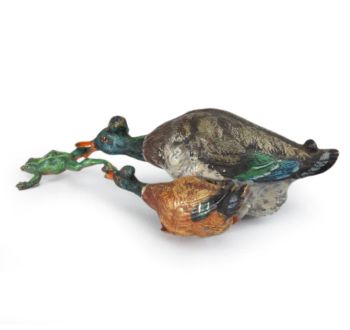German Chandelier, Dresdner Spiegelmanufaktur 1797
Artista Sconosciuto
BicchiereBronzoOroCristalloMetalloDoratoPietra preziosa
75 cm, ø 62 cm
Attualmente non disponibile tramite Gallerease
- A proposito di opere d'arteA German chandelier with four lights manufactured by the Dresdner Spiegelmanufaktur. The construction of the chandelier consists of three panels in blue glass that are mounted in gilt-bronze rings. From the rings crystal ‘icicles’ hang down. The lower ring is fitted with four candleholders with bobêches and ornamental arms decorated with glass pipes. The three rings are held together with chains.
By the end of the 18th century architects started to design chandelier as an integral part of the interior. The chandeliers made around 1800 in specialized factories in Berlin (Werner & Mieth) and Dresden (Dresdner Spiegelmanufaktur) are the pinnacle of this development. The objects were made with the best materials available. Although protectionist measures of especially the Prussian authorities, dictated the use of indigenous materials, this chandelier is fitted with Bohemian glass, which was considered to be of the highest quality at the time. This chandelier of the Dresdner Spiegelmanufaktur was arguably made around 1797. In that very year a very similar model was advertised in the ‘Journal des Luxus und den Moden’ (Dezember 1797, p. 630, image 36). The laudatory description begins as follows:
“Den neuesten Gesmack in Form und verzierung der Kronleuchter zeigt die hierbey gelieferte Schöne Zeichnung eines solchen Leuchters, wie die Churfürtliche Sächsiche Spiegelfabrik zu Dresden, deren geshcmackvollen Arbeiten und schone Dessins wir schon mehrermale in unserem Journale rühmten, dergleichen anjetzt fertigt.”
[The newest taste in form and decoration of chandeliers is shown by the accompanying beautiful illustration of such a chandelier, as the Electoral Saxon Mirrorfactory of Dresden, whose tasteful work and beautiful design has repeatedly been praised in our journal, is manufacturing from now on]
The journal continues with an elaborate description of the chandelier, with particular attention to the colorful interaction of the bleu glass with the ‘crystal tears’. The reviewer of the journal praises the novelty of the use of chains instead of a central rod to connect the various parts of the chandelier, giving it a more airy appearance. The raving text concludes with the remark that the utmost tasteful design of the chandelier is very much recommended by conoisseurs.
(Journal des Luxus und Moden, Dezember 1797)
literature:
K. Klappenbach, Kronleuchter Mit Behang aus Bergkristall und Glas sowie Glasmarmkronleuchter bis 1810, Berlin 2001, pp. 49, 74, 102, 359. - A proposito di opere artista
Può succedere che un artista o un creatore sia sconosciuto.
Alcune opere non sono determinate da chi sono state realizzate o sono state realizzate da (un gruppo di) artigiani. Esempi sono statue dell'antichità, mobili, specchi o firme non chiare o leggibili ma anche alcune opere non sono affatto firmate.
Inoltre puoi trovare la seguente descrizione:
•"Attribuito a …." A loro avviso probabilmente opera dell'artista, almeno in parte
•“Studio di ….” o “Officina di” A loro avviso un'opera eseguita nello studio o nella bottega dell'artista, eventualmente sotto la sua supervisione
•“Cerchio di…” A loro avviso un'opera del periodo dell'artista che mostra la sua influenza, strettamente legata all'artista ma non necessariamente al suo allievo
•"Stile di..." o "Seguace di..." A loro avviso un'opera eseguita nello stile dell'artista ma non necessariamente da un allievo; può essere contemporaneo o quasi contemporaneo
•“Modalità di…” A loro avviso un'opera nello stile dell'artista ma di epoca successiva
•"Dopo …." A loro avviso una copia (di qualsiasi data) di un'opera dell'artista
•“Firmato…”, “Datato…” o “Iscritto” A loro avviso l'opera è stata firmata/datata/inscritta dall'artista. L'aggiunta di un punto interrogativo indica un elemento di dubbio
•"Con firma....", "Con data...", "Con iscrizione..." o “Riporta firma/data/iscrizione” a loro avviso la firma/data/iscrizione è stata aggiunta da qualcuno diverso dall'artista
Artwork details
Related artworks
- 1 - 4 / 12
Reynier de Haan
Un'elegante coppa Monteith in argento olandese Luigi XVI1778
Prezzo su richiestaJacob J. Roosjen SRI
Johannes Schiotling
Un paio di candelieri olandesi in argento1784
Prezzo su richiestaJacob J. Roosjen SRI
Johannes La (le) Blanck
Un set di ampolle d'argento olandese a doppio uso1786
Prezzo su richiestaJacob J. Roosjen SRI
1 - 4 / 7- 1 - 4 / 24
- 1 - 4 / 9
- 1 - 4 / 24

